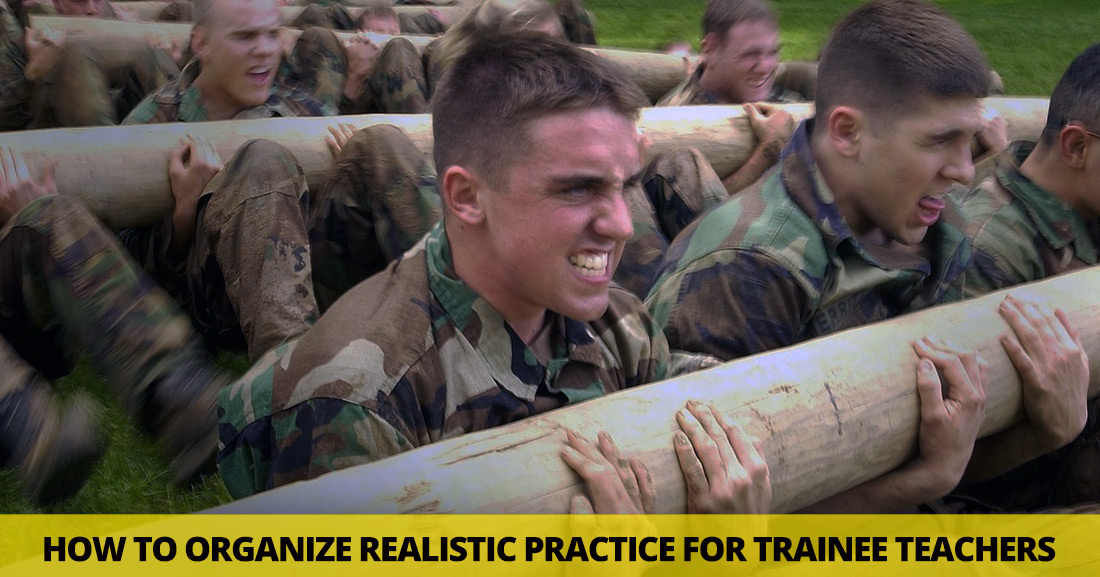Teacher Training 102: The Uncomfortable Truth and 5 Must-Have Habits for Every New Teacher


Back in 1999, the CELTA required trainees to teach around six lessons, all observed and subject to grading, and I remember them as exciting, challenging and revealing insights into the world I was about to enter.
When I became a trainer, I knew we had to find ways of maximizing this opportunity for our trainees, ensuring that they got the most out of these precious practice opportunities. My first training job was in China, where our student-trainees spent several weeks in middle schools, under the guidance of the older generation of teachers (with whom, I must admit, we did not always see eye to eye). This was a special challenge, but most teacher trainers work in less politically complicated institutions, as I later did in the US. Taking these experiences as a whole, I’ve compiled some advice on how to make teaching practice a smooth, practical, and hopefully enjoyable part of our students’ training.
My trainees have lesson planning principles drilled into them from day one, and they’re as likely to begin a lesson without a plan as they are to leave home without their wallet and phone. Time and time again, we reiterate the importance of writing down the structure, timings, content and other details of the class, so that they have a ready reminder of what they’re trying to achieve, and what will come next in the lesson.
To inculcate this habit, the trainers emphasize their own use of plans during our training sessions – I stick my own plan on the classroom wall, by the board, and make a big deal out of following it as I go – and make all of our plans available to the trainees, so that they can see how an experienced teacher goes about the process. We have our students practice planning for all kinds of situations, including conversation classes, reading and writing lessons, and the Integrated Skills classes so favored by ESL schools. By the end of the course, our trainees have written perhaps 40-50 lesson plans – though I’d double this, if I could – and they find the process becoming faster and smoother as they gain experience and plug in the lessons of their teaching practice.
If you’re helping to run a CELTA course, or a similar qualification, then you’ll probably have access to actual classrooms, complete with furniture, facilities, textbooks and the like. This is a terrific chance to emulate the conditions our trainees will, all too soon, find themselves in. We also adjust the school schedule so that the trainees have both time to teach the class, and to receive feedback afterward, without cutting down their practice time. We require them to prepare their classroom, arranging the furniture as they see fit, cleaning and readying the board, and adjusting lighting and heating. More than anything, this is just a chance to spend a few minutes in the space before their students arrive.
These last few minutes are obviously critical, and as a trainer who’s about to observe the class, I sometimes offer some last minute advice:
This is where the trainers can have a little fun. In our attempts to ensure that our trainees get realistic experience, we’ve taken to adding a couple of extra students – whether they’re fellow CELTA trainees helping out, or students from the ESL school itself – to bring situational complexity to the class by acting as pre-positioned agents provocateurs. Here’s the kind of antics we encourage, in moderation and purely to provide additional experience for the trainee-teacher:
Observers should simply observe. It’s tempting to get involved, especially if things are going off the rails, but failure is part of the process, and it’s far better for the trainee to have a wobble during their practice sessions than when they’re in front of demanding, paying customers or impoverished students in a developing nation.
I’ve got a prepared sheet for observations, and I make lots of notes for the feedback session afterward, but I never get drawn into the class. I might occasionally smile or give the teacher a quick thumbs-up, especially if they’re nervous or if it’s their first time. A discrete signal that they’re on the right path can bolster confidence at important moments, but that’s as far as I’d go.
It’s carefully structured, like most music, but also highly improvisatory. No two iterations of the same piece will be same, and when starting out, all we have is an agreed framework; the moment-to-moment happenings are unpredictable and reactive, much like those in a language classroom. Encourage your trainees to stay light on their feet, and to learn to respond to what’s really happening in front of them. No amount of planning can prepare a teacher for the vagaries of human spontaneity, and that’s how it should be, but thorough planning can provide useful options and tactics. Ensure that your students build your feedback comments into their follow-up lessons, and remain committed to making their next lesson even better than their last.